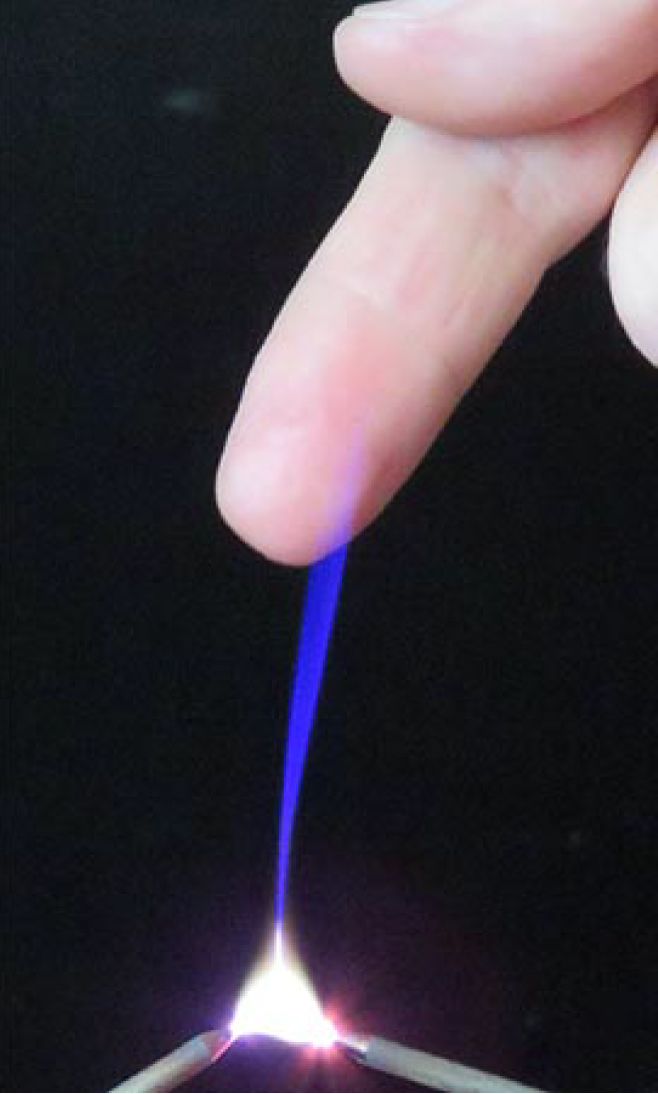EPJ D Highlight - Novel plasma jet offshoot phenomenon explains blue atmospheric jets
- Details
- Published on 08 February 2017

Russian physicists identify mysterious right-angle side-jet occurring off the plasma arc in air at ambient pressure conditions
Ionised matter, like plasma, still holds secrets. Physicists working with plasma jets, made of a stream of ionised matter, have just discovered a new phenomenon. Indeed, Eduard Sosnin from the Institute of High Current Electronics, Russian Academy of Sciences in Tomsk, Russia, and colleagues found a new type of discharge phenomenon in an atmospheric pressure plasma. It has been dubbed apokamp—from the Greek words for ‘off’ and ‘bend’, because it appears at a perpendicular angle to where plasma jets bend. Their findings have been recently published in EPJ D and are particularly relevant for the development of novel applications in medicine, health care and materials processing because they involve air at normal atmospheric pressure, which would make it cheaper than applications in inert gases or nitrogen.
The authors established the conditions for the phenomenon to occur. It takes two electrodes positioned at an angle to each other, together with electric field lines which are curved upward between the two electrodes. It requires not one but both electrodes to have a high voltage to obtain an apokamp plasma jet, which typically develops from the bending point of the discharge channel. The apokamp can vary from a single needle to a 6-7-cm-long conical jet attached to the arc of the plasma current channel.
Using high-speed photography data on the apokamp dynamics, the authors elucidated its nature as consisting of ionisation waves—so-called plasma bullets—that move with a velocity of 100–220 km/s. Such plasma bullets have previously been detected in inert gases and in nitrogen in the presence of negatively charged gas.
The next step would require gathering sufficient data to build a model that can further explain the apokamp phenomenon. This phenomenon can help explain the blue jet phenomenon identified in 1994 in the upper atmosphere, where strange upwards-facing jets develop from thunderstorm clouds.
E. А. Sosnin, V. А. Panarin, V. S. Skakun , E. Kh. Baksht, and V. F. Tarasenko (2017), Dynamics of apokamp-type atmospheric pressure plasma jets,
European Physical Journal D 71:25, DOI: 10.1140/epjd/e2016-70466-0





